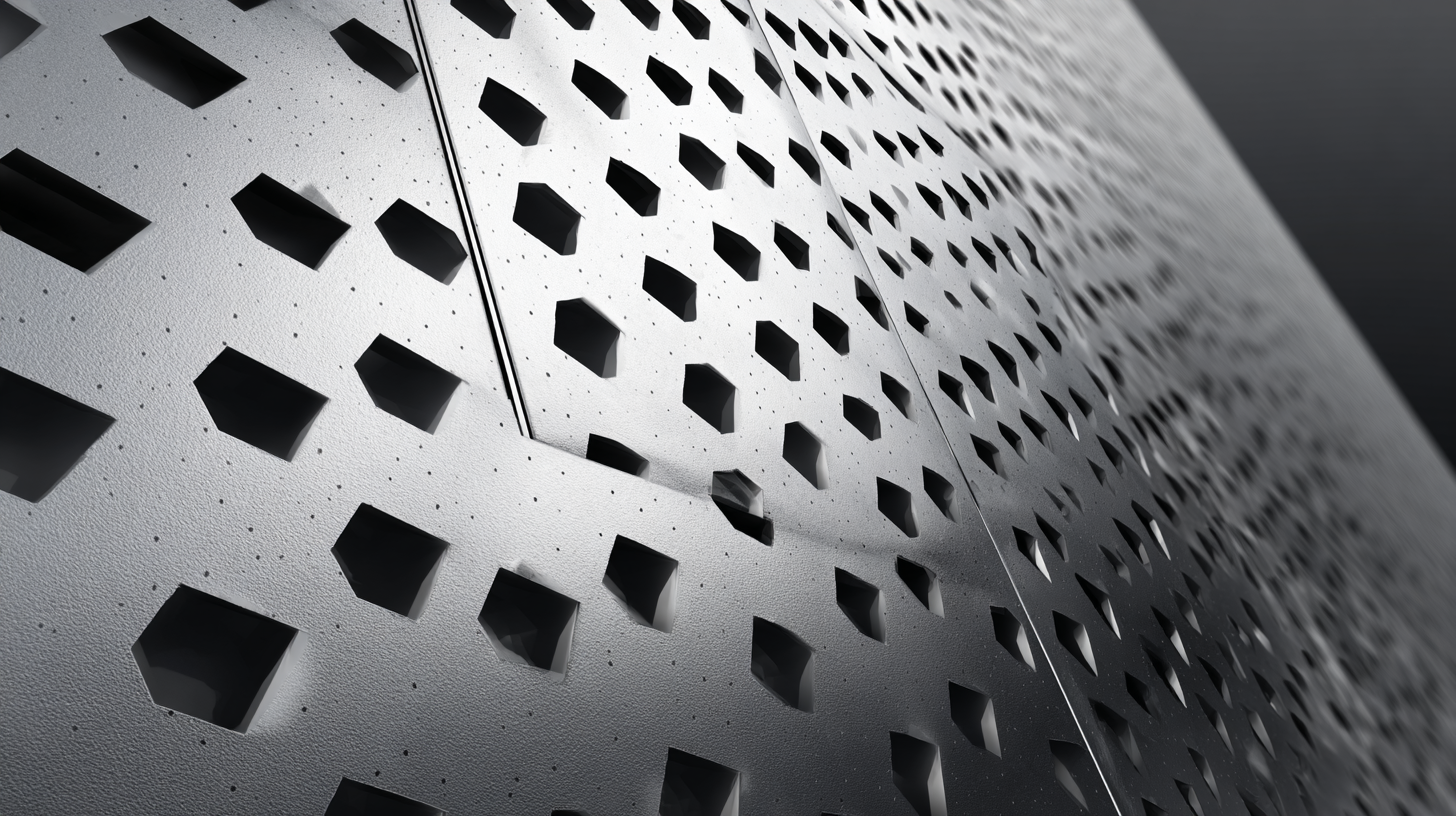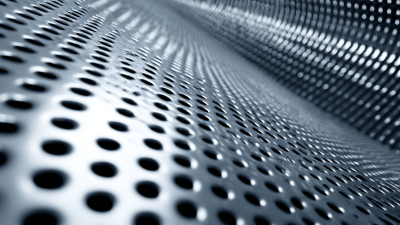Cart
Exploring the Versatility of Perforated Steel Sheets in Modern Architecture and Design
In the realm of modern architecture and design, the versatility of perforated steel sheets has emerged as a transformative element, allowing architects and designers to push the boundaries of creativity and functionality. These sheets, characterized by their distinct holes and patterns, serve not just as structural components but also as aesthetic features that enhance both visual appeal and practical performance.

From facades that provide dynamic light and shadow effects to interior applications that promote airflow and acoustic control, perforated steel sheets are redefining how spaces are conceived and utilized. This article delves into various innovative ways to incorporate perforated steel sheets into design projects, showcasing their adaptability across different contexts and emphasizing their role in sustainable architecture.
As we explore the myriad possibilities, it becomes evident that perforated steel sheets are more than mere materials; they are an essential design tool that can harmonize form and function.
The Aesthetic Appeal of Perforated Steel Sheets in Contemporary Architecture
 The aesthetic appeal of perforated steel sheets in contemporary architecture is a fascinating topic as these materials merge functionality with design elegance. Architects increasingly utilize perforated steel sheets for facades, ceilings, and balustrades, enabling innovative light manipulation and ventilation. This not only enhances visual dynamics but also contributes to energy efficiency in modern buildings. The interplay of light casting intricate patterns through perforations adds an artistic dimension to structures, transforming them into contemporary masterpieces.
The aesthetic appeal of perforated steel sheets in contemporary architecture is a fascinating topic as these materials merge functionality with design elegance. Architects increasingly utilize perforated steel sheets for facades, ceilings, and balustrades, enabling innovative light manipulation and ventilation. This not only enhances visual dynamics but also contributes to energy efficiency in modern buildings. The interplay of light casting intricate patterns through perforations adds an artistic dimension to structures, transforming them into contemporary masterpieces.
When considering the use of perforated steel sheets in design, it’s essential to think about the following tips: First, choose a perforation pattern that aligns with your project’s theme and environment. Unique patterns can bring character to otherwise mundane surfaces. Second, consider integrating color or finishes to further enhance visual interest while maintaining durability. Lastly, evaluate the functional aspects, such as acoustics and safety, to ensure the aesthetic elements support the overall design requirements effectively. These considerations can lead to a cohesive, striking architectural narrative that captivates and serves its purpose.
Functional Benefits of Perforated Steel in Building Design
Perforated steel sheets have emerged as a favored material in modern architecture, primarily due to their myriad functional benefits. One of the most significant advantages is their ability to enhance ventilation while maintaining structural integrity. By allowing air and light to flow through, these sheets contribute to a comfortable indoor environment and reduce the reliance on ventilation systems. This natural airflow not only lowers energy costs but also creates a healthier space for occupants.
Moreover, perforated steel sheets play a crucial role in maintaining privacy without sacrificing brightness. Architects can design facades and screens that obscure views while still permitting sunlight to filter in, promoting an inviting atmosphere. Additionally, these sheets are lightweight and can be easily fabricated into various shapes and sizes, allowing for creative and aesthetic flexibility in building design. Their durability and resistance to weathering further ensure that they can withstand the rigors of time, making them an economical choice for both new constructions and renovations.
Sustainability and Eco-Friendly Aspects of Using Perforated Steel
The utilization of perforated steel sheets in modern architecture not only showcases aesthetic versatility but also aligns with the growing emphasis on sustainability in design. These materials can significantly reduce the environmental footprint of a building through their inherent properties. For instance, perforated steel allows for enhanced ventilation and natural light while minimizing the need for additional energy sources for heating and cooling. By integrating perforated designs into façades, architects can create visually striking structures that are both functional and eco-friendly.
Recent innovations in sustainability highlight the emerging trend of using perforated materials, as seen in various projects around the globe. A notable example is the construction of self-sustainable residences featuring all-white perforated facades that blend seamlessly with their surroundings, reducing heat absorption and enhancing energy efficiency. Furthermore, the development of sustainable building materials such as engineered wood and alternatives like bamboo showcases a shift toward eco-friendly construction practices. Such innovations reflect a broader industry movement towards creating sustainable architecture that respects resource conservation and promotes environmental health.
Exploring the Versatility of Perforated Steel Sheets in Modern Architecture
Innovative Applications of Perforated Steel in Urban Spaces
Perforated steel sheets have emerged as a transformative element in modern urban design, offering a fusion of aesthetic appeal and functionality. Their innovative applications can be seen in various urban spaces, where they serve critical roles beyond mere structural support. For instance, these sheets can be utilized in facades of buildings, allowing natural light to filter through while providing a dynamic visual effect. This interplay between light and shadow not only enhances the architectural beauty but also contributes to energy efficiency, making perforated steel an ideal choice for sustainable design.
In public spaces, perforated steel structures can be employed to create art installations, seating areas, and even partition walls, turning ordinary environments into engaging urban landscapes. Their customizable patterns and textures allow designers to express creativity while addressing practical concerns like ventilation and safety. Moreover, their durability and weather resistance make them suitable for various climates, reinforcing the idea that perforated steel is not just a design element but a versatile tool that can adapt to the ever-evolving needs of urban areas. As cities continue to develop, the role of perforated steel in shaping engaging, functional, and sustainable spaces will undoubtedly increase.
Customization and Design Flexibility Offered by Perforated Steel Sheets
 Perforated steel sheets have emerged as a crucial component in modern architecture and design, providing not only structural functionality but also aesthetic appeal. One of the key advantages of these materials is their customizability. According to a report by the Freedonia Group, the demand for perforated metals is projected to increase by 3.5% annually, driven largely by their adaptability across various sectors including commercial building and industrial applications. Designers can effortlessly tailor the size, shape, and pattern of perforations to align with specific design visions, making it ideal for both facade cladding and interior applications.
Perforated steel sheets have emerged as a crucial component in modern architecture and design, providing not only structural functionality but also aesthetic appeal. One of the key advantages of these materials is their customizability. According to a report by the Freedonia Group, the demand for perforated metals is projected to increase by 3.5% annually, driven largely by their adaptability across various sectors including commercial building and industrial applications. Designers can effortlessly tailor the size, shape, and pattern of perforations to align with specific design visions, making it ideal for both facade cladding and interior applications.
When working with perforated steel sheets, consider the balance between functional design and aesthetic qualities. Tip 1: Collaborate closely with engineers during the design phase to ensure that the chosen perforation pattern does not compromise structural integrity. Tip 2: Utilize software tools to visualize how different perforation designs can affect light diffusion and air circulation in the space. The flexibility offered by perforated steel can also foster innovative solutions such as sound dampening in urban environments or enhancing natural ventilation within buildings.
Furthermore, the sustainability aspect of perforated steel sheets cannot be overlooked. The use of recycled materials in their production aligns with the growing trend towards eco-friendly design solutions. Tip 3: Explore local suppliers who provide sustainably sourced materials to further enhance the green credentials of your project. As designers continue to push the boundaries of creativity, perforated steel sheets will undeniably play a vital role in shaping the future of architecture and design.

